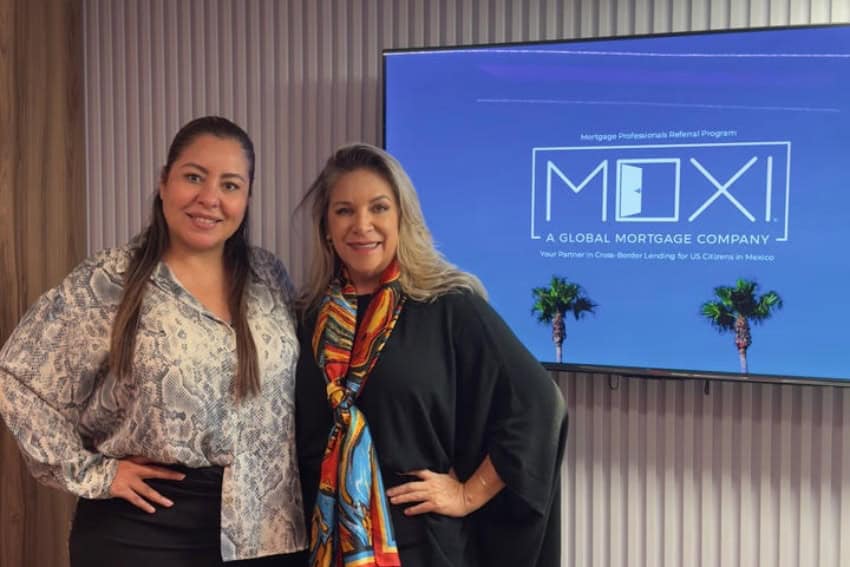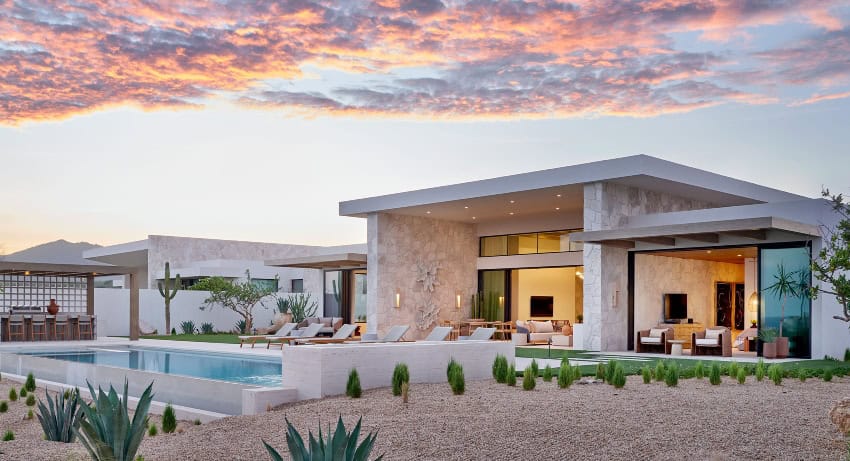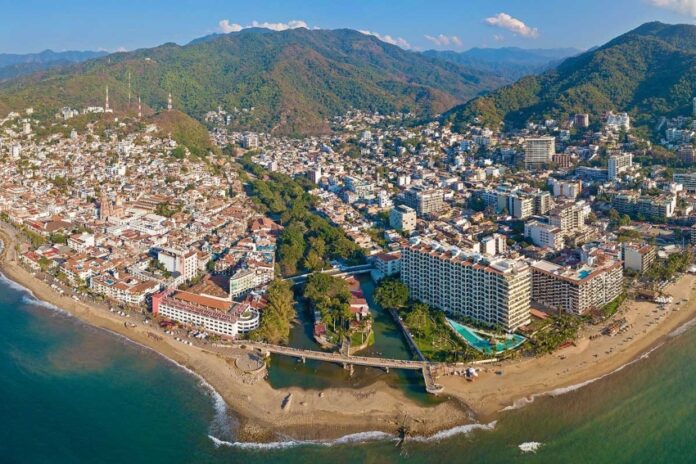For foreigners, Mexico’s real estate market has been defined by one reality: purchasing a home required cash. Foreign buyers typically wired full payment into escrow or directly to sellers, and transactions often closed in a matter of days. Mortgages for non-residents were nearly impossible to obtain, leaving most buyers with no option but to pay cash.
That reality is beginning to shift. With U.S.-style financing models entering Mexico’s real estate landscape, buyers now have new options for purchasing property — particularly in high-demand markets such as San Miguel de Allende, Los Cabos and Puerto Vallarta. While still a niche part of the market, the availability of structured lending could gradually change how and who buys homes in Mexico.

Until recently, the vast majority of real-estate transactions in Mexico were completed entirely in cash. The process was quick and relatively simple. However, it excluded many would-be buyers who preferred or needed financing. Mexican banks generally wouldn’t lend to foreigners because they lacked a local credit history or income in pesos, and properties in restricted zones (near the coast or borders) required a fideicomiso — a bank trust structure that added even more complexity.
Developers occasionally offered short-term payment plans, but long-term, U.S.-style mortgages were essentially nonexistent. As a result, Mexico’s housing market largely catered to cash-ready retirees and investors.
The new landscape of U.S.-style financing
That situation is now evolving. Companies such as MOXI Mortgage International, MEXLend, and HIR Casa are introducing mortgage products designed for foreign buyers, especially Americans who want to finance property in Mexico rather than pay entirely in cash.
During a recent meeting with Victoria Ávila, manager of MOXI’s San Miguel de Allende branch, and María Ocampo, manager of the company’s Puerto Vallarta branch, the lender shared details about how its model is expanding across Mexico.
MOXI loans are available exclusively to U.S. citizens and underwritten using familiar U.S. standards. Borrowers apply in English, submit American financial documents and repay their loans in U.S. dollars. The company offers three types of loans: traditional mortgages for new purchases, refinancing loans and an “Anywhere Loan,” an unsecured product of up to US $200,000 for borrowers who already own property but need liquidity for improvements or other investments.
The availability of mortgage loans
MOXI’s minimum mortgage loan amount is US $250,000, targeting mid- to high-value properties over US $350,000 in value. Loans carry a 2.99% origination fee, charged in addition to the usual closing costs in San Miguel de Allende, which average around 5.5% of the purchase price. Terms extend up to 30 years, a rarity in Mexico’s financing market.

To broaden access, MOXI is partnering with HIR Casa, a Mexican financial institution that offers smaller loans and financing to non-American buyers. HIR’s programs typically run up to 10 years, filling a gap for buyers who don’t qualify for MOXI’s larger, dollar-denominated loans.
Meanwhile, brokers such as MEXLend provide mortgage options from multiple lenders, offering both peso- and dollar-denominated loans to domestic and international clients. Together, these institutions signal that Mexico’s property market is becoming more sophisticated, with financing alternatives slowly replacing the long-standing “cash only” model.
A potential shift in the market
Local professionals say the growth of mortgage products may not transform the market overnight, but it’s already influencing buyer behavior.
“Financing doesn’t dominate our market, but it’s becoming part of the conversation,” says Ernesto Kiang Chong, a Mexican realtor with eight years of experience at CDR Forbes Real Estate in San Miguel de Allende. “It’s helpful for buyers who want flexibility, but sellers and agents also need to understand how loans affect timing, paperwork and closing.”
When it’s time to sell: the challenge of removing a lien
While financing opens the market to new buyers, it can also create challenges when it comes time to sell. Homes purchased with a mortgage carry a lien held by the lender, and that lien must be fully released before ownership can be transferred to a new buyer.
This can become complicated if the seller intends to use the proceeds from the sale to pay off the loan. “If the funds from the buyer need to go directly to the lender, there can be hesitation,” explains Chong. “Buyers want assurance that the lien will be cleared before title transfers, but the payoff and release process can take time. That sometimes delays closings and causes frustration on both sides.”

In the United States, escrow agents routinely coordinate lien payoffs and releases as part of closing, often in a single day. In Mexico, however, the process can be more cumbersome, involving coordination among the lender, notary and local property registry. The lender must issue a carta de liberación (release letter), and that document must be officially recorded before the new deed can be executed.
If any of these steps are delayed — such as wire transfers, document verification or registry updates — the closing may be postponed by days or even weeks. For sellers depending on the proceeds to fund another purchase, those delays can be particularly stressful.
Managing expectations
To avoid problems, Chong recommends early planning. Sellers with financed properties should contact their lender well in advance to request a formal payoff statement and confirm how long it will take to obtain the lien release. Working with an escrow company experienced in cross-border transactions can also help ensure that payoff and closing funds are handled correctly.
Buyers, meanwhile, should be prepared for longer timelines when purchasing a property that still carries a loan. Coordination between the lender, notario and escrow service is essential for a smooth handover.
Because financing remains relatively new in Mexico’s property market, Chong emphasizes that it’s important for buyers and sellers to work with a real estate professional who understands cross-border lending and can guide them through the process. “A good agent can anticipate timing issues, explain lender requirements, and keep communication flowing between all the parties,” he says. “That can make the difference between a smooth closing and a very frustrating one.”
A knowledgeable realtor can also help buyers evaluate the pros and cons of different financing options, coordinate with escrow and the notario, and ensure the lien release and registration steps are completed properly at resale.
A market in transition

Financing in Mexico is still a relatively small segment of the overall market, but the presence of companies like MOXI, MEXLend, and HIR Casa represents a gradual shift toward greater accessibility and standardization. Cash transactions will continue to dominate for the foreseeable future, yet the ability to secure a long-term mortgage makes owning a home in Mexico more feasible for a broader range of buyers.
As lenders, agents and notarios gain more experience with these transactions, processes should become faster and more predictable. For now, each financed sale still involves a learning curve.
Even so, the impact is being felt. “It’s not a revolution,” Chong says, “but it’s definitely an evolution. Buyers have more choices, and that’s good for the market.”
The bottom line
The introduction of U.S.-style mortgage products in Mexico offers a promising new avenue for qualified buyers — especially Americans — to purchase property. It’s a welcome development in a market long dominated by cash deals, but one that also comes with added layers of complexity, from origination fees to lien management at resale.
As Mexico’s real estate sector continues to mature, working with an experienced agent who understands both the benefits and the challenges of financing will help buyers and sellers navigate this changing landscape with confidence.
Glenn Rotton is a real estate agent with eight years of experience in San Miguel de Allende. Originally from Seattle, he has lived in Mexico for twelve years with his husband, Kiang Chong Ovalle, and their dog, Angus. Read more about Glenn here.
